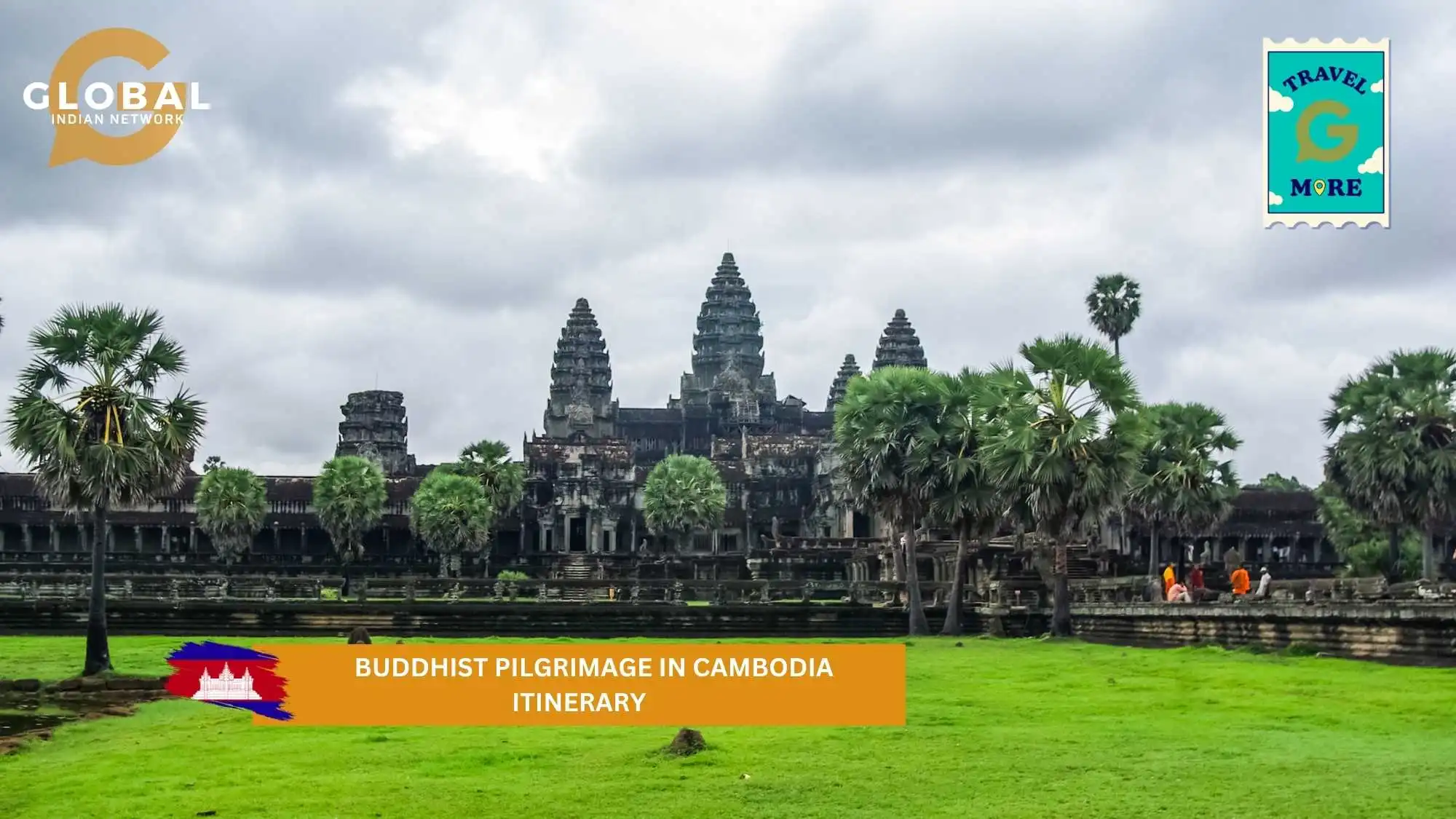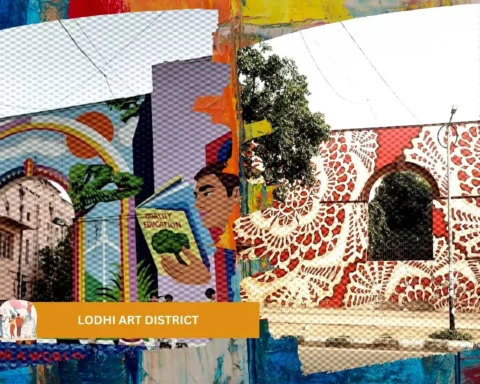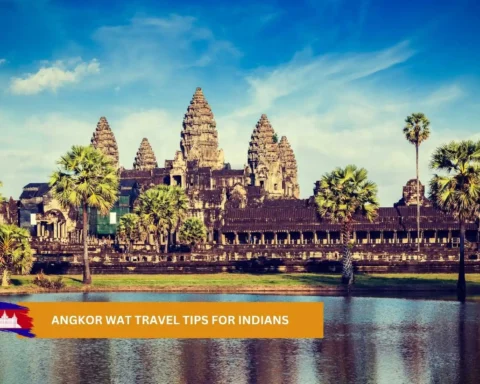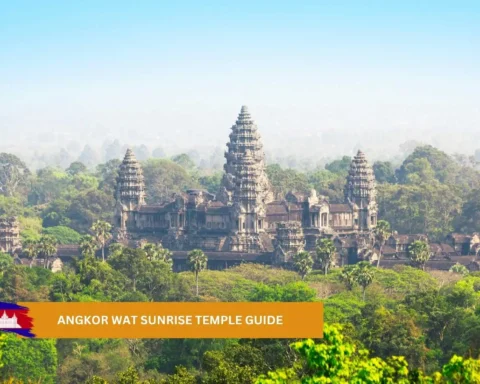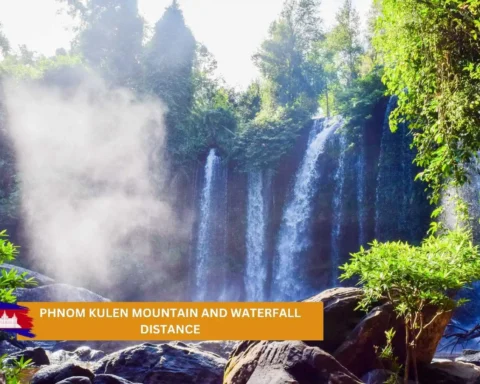Cambodia, a land rich in history, culture, and spirituality, offers a unique experience for those looking to explore the roots of Buddhist traditions in Southeast Asia. A Buddhist pilgrimage in Cambodia itinerary provides an enriching journey through ancient temples from Prei Kuk to majestic monuments and sacred sites, many of which have witnessed the rise and fall of the mighty Khmer Empire. From the grandeur of the island of Neak Pean to the somber reflections at Tuol Sleng Genocide Museum and the white sands of Sok San beach, the country offers an unforgettable experience that seamlessly blends spirituality, history, and cultural heritage.
Whether you are a pilgrim seeking tranquility, a history enthusiast, or a traveler looking to delve deeper into the spiritual roots of Southeast Asia, Cambodia has something special to offer.
Table of Contents
Buddhist Pilgrimage in Cambodia Itinerary: Exploring Siem Reap and Angkor Wat
Start your pilgrimage in Siem Reap, home to the world-famous Angkor Wat, the largest religious monument on the planet and a UNESCO World Heritage Site. The majestic temple complex, built during the Khmer Empire, is an essential part of any Buddhist pilgrimage in Cambodia itinerary. As you explore the intricacies of Angkor Wat temple, you will come across thousands of intricate carvings depicting Buddhist legends and teachings, offering a perfect introduction to the country’s spiritual legacy.
In addition to Angkor Wat, you must visit Angkor Thom, the ancient royal city of the Khmer Empire (not to be confused with the Khmer Rouge). Here, the Bayon Temple stands out with its iconic stone faces of Avalokiteshvara, which are both a stunning architectural feat and a symbol of compassion. While in Siem Reap, take time to visit Ta Prohm, the temple made famous by the movie Tomb Raider, where tree roots intertwine with the stone structures, evoking a sense of mysticism.

The Spiritual Heart of Cambodia – Phnom Penh
After soaking in the spirituality of Angkor Wat, make your way to Phnom Penh, the capital of Cambodia. In Phnom Penh, many accommodation options are available, such as the Kampong Thom and the Penh House Hotel. Kampong Thom and the Penh House Hotel are best accessible from much of the capital. From here, you’ll encounter the sacred Silver Pagoda, home to an impressive collection of Buddha statues and relics, including the Emerald Buddha. The pagoda, within the royal grounds of the Royal Palace, is a key Buddhist site that showcases the country’s deep spiritual traditions.
In the same city, a visit to Choeung Ek, one of the many Killing Fields, and the Tuol Sleng Genocide Museum offers a poignant reminder of Cambodia’s troubled past under the Khmer Rouge regime. Though sites like Choeung Ek are somber, they are crucial in understanding the resilience of the Cambodian people and their spiritual recovery from this dark chapter. From Phnom Penh, one can escape to the much quieter Siem Reap or the more tranquil Koh Rong Samloem. Ticket offices and other attractions carry business in the local currency or the US dollar.
Nature, Spirituality, and Water Management Systems
Away from the bustling Phnom Penh, you can head towards Kulen Mountain and Waterfalls for a day of spiritual reflection in nature. A sacred site for Cambodians, Kulen Mountain is where Angkor Wat was originally consecrated. Pilgrims often visit to pay homage to the sacred water source, and the breathtaking waterfall provides the perfect environment for meditation and prayer.
Next, explore the Water Management Systems around Preah Khan, which were critical to the prosperity of the Khmer Empire. Preah Khan, a sprawling Buddhist temple built by King Jayavarman VII, is one of the most serene temples within the Angkor Archaeological Park. Its vast courtyards and peaceful surroundings make it an ideal stop on your pilgrimage.
Off the Beaten Path: Banteay Srei and Koh Rong
For a more intimate Buddhist experience, visit Banteay Srei, a smaller temple compared to most around Siem Reap and Phnom Penh but one of the most exquisite examples of Khmer architecture. Known as the “Citadel of Women,” its detailed carvings and serene ambience offer an escape from the more crowded temples of Angkor. The temple, dedicated to the Hindu god Shiva, reflects the deep artistic and spiritual traditions of the region.
End your day with a visit to Koh Rong, a tranquil island off the coast of Cambodia. Known for its pristine beaches and peaceful environment, Koh Rong provides a reflective space for pilgrims to unwind and connect with nature. If the beaches do not appease you, you can head to Koh Rong Samloem, which is becoming a backpacker paradise for some. Koh Rong Samloem tends to be a much quieter option
Exploring the Tonle Sap Lake and Kampong Phluk
On your final day, visit Tonle Sap Lake, the largest freshwater lake in Southeast Asia. The floating villages here, like Kampong Phluk, offer a unique glimpse into the spiritual and everyday lives of Cambodian people. The calmness of the lake and the floating Buddhist temples along its shores provide an opportunity for quiet reflection and connection to the land’s spiritual energy.
This day will also bring a sense of closure to your Buddhist pilgrimage in Cambodia as you reflect on the journey through the country’s ancient Buddhist temples, natural landscapes, and historical sites from the busy Phnom Penh and ancient Prasat Sambor Prei Kuk.
Conclusion
A Buddhist pilgrimage in Cambodia itinerary offers an enriching spiritual journey through one of Southeast Asia’s most historically and culturally significant regions. From the awe-inspiring temples of Prasat Sambor Prei Kuk and Angkor Thom to the somber reminders of Cambodia’s tragic past in Phnom Penh, this journey takes you through the very heart of Cambodian spirituality. Whether you are exploring sacred temples like Ta Prohm and Preah Khan or reflecting on the country’s Buddhist traditions amidst the beauty of nature, Cambodia is sure to provide a transformative experience. Embrace the serenity, beauty, and history as you follow in the footsteps of pilgrims who have visited this spiritual haven for centuries.

FAQs
What is the best time to go on a Buddhist pilgrimage in Cambodia?
The best time to visit Cambodia for a Buddhist pilgrimage is during the dry season, from November to February. The weather is cooler, making it more comfortable for exploring the temples and other historical sites such as Siem Reap, Phnom Penh, and the Killing Fields.
What are Cambodia’s hidden gems?
Outside the famed attractions in Phnom Penh, Cambodia, there are a variety of other destinations. Prasat Sambor Prei Kuk is a lesser-known temple complex but is older than Angkor Wat. The Pagoda Beach is another place for one to relax.
Can I visit the Buddhist temples near Siem Reap in a single day?
While it’s possible to visit several key Buddhist temples in Siem Reap in a single day, it is advisable to take your time and explore sites like Angkor Wat, Ta Prohm, and Angkor Thom over two or more days to fully appreciate the historical and spiritual significance of each temple.




